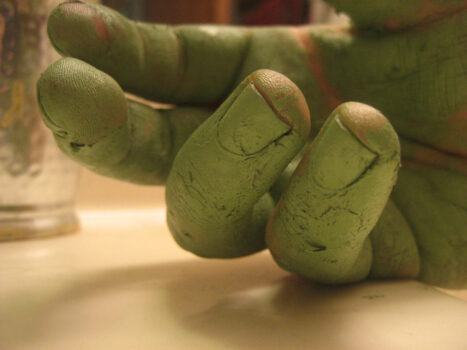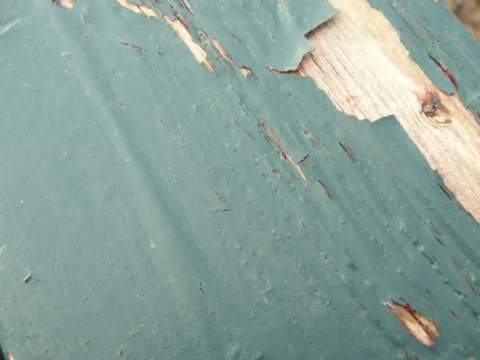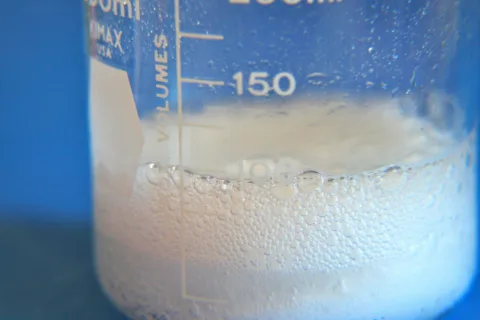
While some people may think that paint removal requires a chemical stripper and hours of work, there are plenty of non toxic paint remover options — that are kind to the environment and your lungs and they’re guaranteed to save you time!
Using natural cleaning products isn’t a new concept — but you might not have considered the toxins in most paint removers.
The active ingredients in most common paint removers are organic solvents which may damage the skin, eyes, respiratory tract, nervous system, and internal organs.
Liquid paint and varnish removers are among the most toxic products used in homes.
Paint removers in paste form are less hazardous than the liquid ones — because they only contain around 50% solvents, rather than 100% as found in the liquid ones.
So, if you’re looking for ecofriendly ways to remove paint, here are my 5 go-to non toxic paint removers:
#1 – No Methylene Chloride Paint Removers
Methylene chloride is present in many products that remove paint.
It’s also the ingredient that:
- Causes you to become lightheaded.
- Creates hand and eye fatigue.
- Might even leave you with chemical burns.
There’s also research indicating that methylene chloride could cause cancer.
Paint removers that don’t contain methylene chloride — such as 3M Safest Stripper and Smart Strip Advanced Paint Remover
— remove paint just as well without exposing you to toxic chemicals.
While these non toxic paint removers don’t require gloves or extensive ventilation, you should still take some precautions. Use gloves, open a few windows, and be sure to follow the manufacturer’s advice.
#2 – Soy Gel Paint Removers
A soy gel paint remover — like Blue Bear SoyGel Paint Remover — has the following advantages:
- It is non-toxic.
- It’s lower in fume emissions.
- It has longer lift times.
Many people find that soy gel works better to remove paint than traditional methods. It can be applied with a paint brush, and (because it doesn’t evaporate) it can be left on for several hours.
Soy gel is a great non toxic paint remover that can replace traditional chemical strippers. It can easily be applied to furniture, moldings, and cabinetry — and it will not drip.
Soy gel is biodegradable, but you should contact your local waste management company to find out how to dispose of the paint that you remove safely.
#3 – Citrus-Based Paint Removers
Using citrus-based products — such as CitriStrip — to remove paint can also be very effective.
Citri-Strip is a powerful, industrial-strength remover. It’s a gel that stays wet and active for up to 24 hours, allowing you to strip multiple layers in one step.
Benefits to using CitriStrip:
- It contains no methylene chloride.
- It’s non-caustic.
- It’s ideal for indoor use.
Biodegradable and low emissions citrus-based paint removers emit an orange odor that most consider pleasant — especially when compared to chemical paint strippers.
#4 – Boiling Water & Baking Soda
This technique works only with metal hardware, but it’s one of the easiest of all the paint removal methods.
Here’s how to make this eco friendly paint remover:
- Simply place your hardware in a pot of boiling water.
- Add baking soda to the pot.
- Boil the mixture for 20 minutes.
- Finish the job by lightly scrubbing the object with a toothbrush.
TIP: Be sure to use a pot that you will not ever use for cooking to remove paint from the hardware!
Using boiling water to remove paint is an old trick. It works because metal and paint expand at different rates when heated — causing the bond between the 2 materials to break.
Although using boiling water alone will sometimes work, some people swear by using a small amount of baking soda in the water — and it definitely won’t hurt to put some in.
#5 – Manual Techniques To Remove Paint
Sometimes a paint scraper and some patience is all you need to remove paint.
If the paint is in bad condition, consider removing as much as possible with a paint scraper, and then finishing up with another treatment.
For large areas, sandblasting is another technique that is fairly ecofriendly and easy to use.
If you have some sandblasting experience, the equipment can be rented to complete the job. Just keep in mind how you plan on disposing of the waste when you’re done.
For sandblasting projects that are very involved, you’ll need a professional — because they’ve been trained to minimize exposing the wood grain. They’ll also take all of the necessary precautions for larger projects and dispose of everything when they’re done.
More Eco Friendly Paint Remover Tips
In addition to the links I’ve included above, here are some other ideas to help you safely remove paint:






